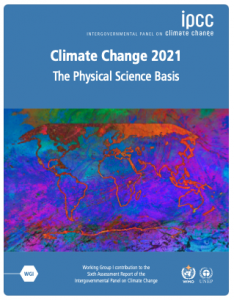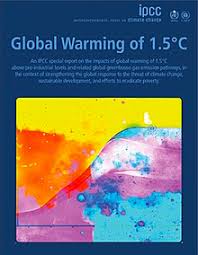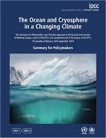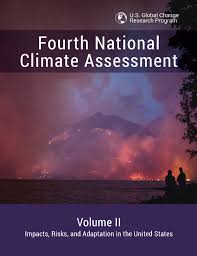Appendix C: The International Process
The most challenging question of the current climate crisis is how we as individuals, communities, and a species can respond to it. As mentioned in the introduction to this manual we are confronted with a problem that requires “all hands and minds on deck” to solve it. This means that we are faced with a problem that extends far beyond the basic science, to involve individual choice, grassroots action, technological, economic, and social innovation, and government action at all levels. Having said this, climate issues know no political boundaries meaning that for all its complexity and frustration, a collective international response is a necessity, providing a framework for action at all other levels.
This appendix provides a look into the international process in terms of who the major players are, what has been said in key documents, and what key events have shaped this process. It also includes an examination of how this process connects with local action and why it is important to keep this connection alive even though the international process may feel agonizingly slow and compromised.
Major players
|
|
Intergovernmental Panel on Climate Change |
The IPCC is the United National body responsible for assessing the science related to climate change. Its mission is to provide governments with scientific information that they can use to develop climate policies. IPCC reports provide key inputs into international climate change negotiations, enabling transparency and objectivity to address climate challenges.
The IPCC does not conduct its own research but is composed of researchers who regularly review and summarize the thousands of scientific research papers published every year. Their summaries, assessment reports, are continually published and updated on a multi-year basis. These assessments identify areas of scientific agreement, and also highlight areas where further research is needed.
Historically, the IPCC was created in 1988 by the World Meteorological Organization (WMO) and the United Nations Environmental Programme (UNEP). Since its inception, the IPCC has produced five major assessments and several special reports which have informed ongoing international negotiations and a number of national climate assessments and climate action plans.
The IPCC is divided into three Working Groups and a Task Force. Each of the working groups is responsible for assessing and summarizing the literature in a key area. These include the physical science of climate change (Working Group 1), adaptation and vulnerability (Working Group 2), and climate change mitigation (Working Group 3). The Task Force on National Greenhouse Gas Inventories (TFI) is charged with developing and refining a methodology for the calculation of national greenhouse gas emissions and removals. Other task groups are convened for set time periods to consider special topics or questions.
|
|
UNFCCC secretariat |
< https://unfccc.int/about-us/about-the-secretariat >
The UNFCCC secretariat is the United Nations body responsible for administrative oversight of the United Nations Framework Convention on Climate Change (UNFCCC). This body was established in 1992 when countries adopted the Convention to enable a global response to climate change. The secretariat currently has over 450 staff members representing nearly 100 countries and has been located in Bonn, Germany since 1995. Over the past 27 years the secretariat has had the following key responsibilities…
- Providing technical expertise and assisting in the review of climate information provided to the parties to UNFCCC.
- Maintaining the registry for National Declared Contributions (NDC) established under the Paris Agreement.
- Organizing and supporting two to four negotiating sessions per year. The largest and most important of these being the Conference of the Parties or COP. The COP is held annually (unless the parties decide not to).
- Organizing and supporting annual sessions of subsidiary bodies and a large number of meetings and workshops throughout the year.
- Informing stakeholders of the negotiating process and climate action through a variety of communication products, including social media.
|
|
United States Global Change Research Program (USGCRP) |
< https://www.globalchange.gov/about >
The USGCRP is a federal program mandated by the US Congress to coordinate federal research and investments in understanding the forces (both human and natural) shaping global society, and their impact on national society. USGCRP coordinates climate research amongst 13 federal agencies and regularly completes a national climate assessment meant to support the development of climate related policy. Though not an international organization its work is heavily dependent on the work of the IPCC. The USGCRP develops a new strategic plan every ten years. These plans evolve with triennial revisions and updates and provide updated scientific information, tools, and resources to help people and organizations manage climate risks and respond to climate change.
Major reports
|
|
Fifth Assessment Report (AR5)A four-volume assessment and summary of major climate research conducted by the IPCC. These include…
As implied by the title, AR5 is the fifth such assessment since the first report was released by the IPCC in 1990. |
|
|
Sixth Assessment Report (AR6)The last of the four volumes of this report is due to be released in its entirety by September 2022. < https://www.ipcc.ch/assessment-report/ar6/ > Volume 1 : The Physical Science Basis was released in August 2021 and is available at < https://www.ipcc.ch/report/ar6/wg1/ > |
|
|
Global Warming of 1.5°C (SR1.5)SR 1.5 is a special report released by the IPCC in 2018 which focused on the impacts of global warming of 1.5°C above pre-industrial levels. This report looked at potential temperature trends and global greenhouse gas emission pathways in terms of their impact on global ecosystems and human communities. It also examined options for sustainable development to keep warming to the 1.5°C target. |
|
|
Climate Change and Land< https://www.ipcc.ch/srccl/ > This special report, released by IPCC in April 2019, looks the impact of climate change on desertification, land degradation, sustainable land management, food security, and greenhouse gas fluxes in terrestrial ecosystems. Recommended reading for novices is the Summary for Policy Makers. |
|
|
Special Report on the Oceans and Cryosphere in a Changing Climate< https://www.ipcc.ch/srocc/ > This special report, released by IPCC in September 2019, looks at the impact of climate change on oceans, coastal zones, alpine glaciers, tundra, ice caps, and sea ice. Recommended reading for novices is the Summary for Policy Makers. |
|
|
The Emissions Gap Report< https://www.unenvironment.org/interactive/emissions-gap-report/2019/ > An annual report produced by the UN Environmental program, that examines the gap between global greenhouse gas emissions and the pledges that countries have made to reduce their emissions under the Paris Agreement on Climate Change. The interactive graphic accessed by the web address above and the Executive Summary are the recommended reading for novices. |
|
|
Fourth National Climate Assessment (NCA4)NCA4 is a report developed by the USGCRP that builds upon IPCC assessments and special reports by examining the impact of climate change on the United States and its regions. Like the IPCC assessments, this multi-volume report is periodically updated to reflect insights gained through advances made in scientific research. Volume 1 of the report is an assessment of the climate science released in 2017 < https://science2017.globalchange.gov/ >. Volume 2 is an assessment of the impacts, risks, and adaptation in the United States released in 2018 < https://nca2018.globalchange.gov/ >. |
Major Agreements
United Nations Framework for Climate Change Convention
The UNFCCC is an international agreement adopted during the Rio Earth Summit of 1992 with the aim of preventing destabilizing human interference with the earth’s climate system. Provisions of the agreement include mitigation of further climate change, adapting to unavoidable change, and continuous monitoring of human impacts on the climate system.
Kyoto Protocol
The protocol is an international agreement reached during the annual conference (1997) in Kyoto, Japan. This agreement commits its Parties to setting internationally binding emission reduction targets. The Protocol placed much of the responsibility for reduction on developed countries arguing that developed countries are principally responsible for the current high levels of greenhouse gasses in the atmosphere, a result 150+ years of industrial activity.
Under the Kyoto Protocol, countries must meet their targets primarily through national measures and a set of market-based mechanisms. The latter included international emissions trading schemes and mechanisms for clean energy developments
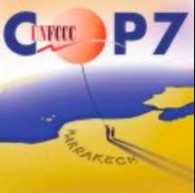 Marrakesh Accord
Marrakesh Accord
The Marrakesh Accords is an agreement reached at the 7th Conference of the Parties to the UNFCCC (COP7), which includes detailed rules for the implementation of the Kyoto Protocol. This Conference of the Parties took place in Marrakesh, Morocco in 2001.
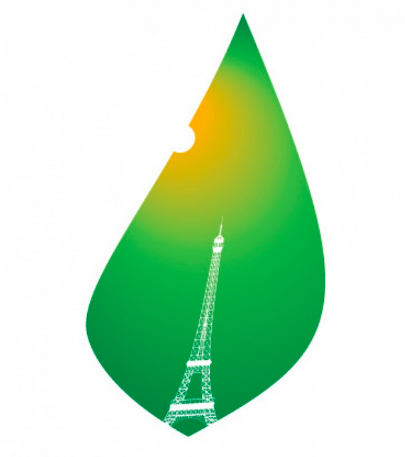 Paris Agreement
Paris Agreement
Adopted in 2015 in Paris, France, this agreement, is regarded as a major milestone in the UNFCCC process. In this agreement, 186 countries agreed to the goal of limiting mean global temperature (MGT) in the year 2100 to less than 2°C above preindustrial MGT. To achieve this goal, the parties agreed to reach carbon neutrality as soon as possible – keeping anthropogenic emissions in balance with carbon removals by the second half of this century. To accomplish this, each party brought to the conference a voluntary set of emission reduction and carbon sequestration targets (Nationally Declared Commitments or NDCs). Under the treaty the international community would conduct a Global Stocktake to assess the effectiveness of these NDCs and enhance those commitments as necessary. The treaty also dealt with adaptation to unavoidable climate changes and financial mechanisms whereby members of the international community would help each other with that adaption.
Where we are and the way forward: September 2021
Where to find summaries of the state of the global climate
- Climate Monitoring < https://www.ncdc.noaa.gov/climate-monitoring/ > Produced by the National Centers for Environmental Monitoring / National Oceanic and Atmospheric Administration, this site contains both global and national climate reports, as well as more specialized monthly reports (droughts, wildfires, snow and ice, tropical cyclones, and upper atmospheric conditions)
- State of the Global Climate 2020 < https://public.wmo.int/en/our-mandate/climate/wmo-statement-state-of-global-climate > Produced by the World Meteorological Organization, these reports are produced annually, with provisional reports being produced between yearly releases. While the reports tend to be technical and lengths, the WMO provides very readable on-line summaries of their conclusions. The WMO also produces annual regional climate reports.
Some of the highlights of the latter report, outlined in a WMO video < https://www.youtube.com/watch?v=pmUCGcBy8tM >, include the following.
- Surface air temperature – 2020 was one of the three warmest years on record, despite a cooling La Nina. The six warmest years in the past nearly 2 centuries have all been since 2015.
- Ocean temperature – Sea surface temperatures are now the highest on record and are accelerating resulting in ocean heat waves that have impacted nearly 80% of the oceans.
- Related ocean climate trends – Acidification and deoxygenation increased, severely impacting marine life.
- Snow and ice – Arctic sea ice extent at the end of summer was the second lowest on record.
- Extreme weather events – Siberian heat waves led to a record 38°C and serious wildfires. Heavy rain and extensive flooding hit large parts of Africa and Asia. The Atlantic hurricane season set a record, with 30 named storms,
In the wake of COP211 over 95% of the countries of the planet signed onto to the Paris Agreement. Collectively, these countries are responsible for more than 87% of all anthropogenic greenhouse gas emissions. COP21 concluded with NDCs insufficient to meet the 2100 treaty target of 1.5 to 2.0°C above pre-industrial average global temperature2. COP21 also concluded with an agreement to regularly take stock of countries’ progress on their NDCs and work towards increasing these commitments to achieve the 2100 temperature target. The purpose of UNFCCC meetings since then has been to work out the details of how to make this happen.
Fast forward to 2021, the UNFCCC process has become so mired in political and economic complications that many of the critical details have been worked out. Consequently, many a citizen observer at COPs 22 through 25, have come home feeling that the entire UN climate effort has been hopelessly compromised by entrenched interests. Add to this the upswing in climate change denialism during the past five years, and it is easy to despair that any meaningful progress can or is being done in coping with our current climate crises.
However, speaking as an official observer at two recent COPs, it is important to note that the negotiations are only a piece of the puzzle. Equally important is the presence of observer delegations representing education, research, environmental action, social justice groups, service clubs, business, agriculture, trade unions, indigenous peoples, faith communities, local government, youth, etc. Though their voices may be overlooked in the negotiations, they are a critical catalyst to the process in that their presence is a reminder that dealing with climate issues is a complicated social problem that impacts all of us. Their presence is also a valuable window into what is happening at the subnational and grassroots level, and that where nations fail to address climate issues there are a lot of local and regional efforts that are taking these issues seriously and making significant progress in dealing with them.
Finally, writing as an observer delegate to an upcoming COP (COP26 in Glasgow, UK), it is important to note that we are at a unique moment in history, where we may be reaching a tipping point in how we as a global society respond to the issues explored in this manual. While destabilization of global climate has accelerated, so has public concern about the impact these trends. Furthermore, global society has been thrust into the position rebuilding global economy in the wake of an unprecedented pandemic at the same time that renewable energy development and electrification of transportation has seen unprecedented growth. Where all this is headed is highly uncertain, but it does give a foundation for hope.





